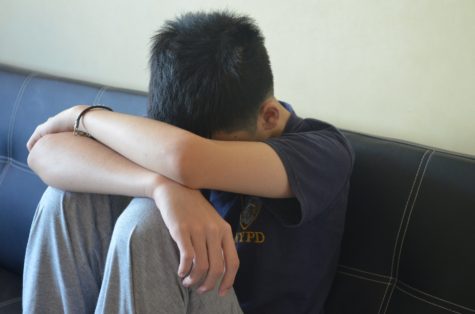CHICAGO — Many teens experience symptoms of clinical depression — a recent study found a “startling” increase in rates — but the feelings often wind up being dismissed as simply industry-standard teenage angst, increasing the child’s odds of not getting proper help and only getting worse, a new study finds.
Researchers at the University of Illinois at Chicago looked at a sample of 369 teens who had been diagnosed as being at risk for depression in screening interviews. Their study pulled data from the Promoting Adolescent Health Study (PATH), and was funded by the National Institutes of Mental Health.
Participants who noted feeling “irritable” or “hopeless” at some point in the weeks prior to the screening were then interviewed over the phone by the researchers to assess their risk for depression.

The PATH’s data was particularly helpful in that “teens rarely stated they were depressed, but described bursts of feeling stressed and sad that often came and went,” says the study’s co-author Dr. Daniela DeFrino, an assistant professor of research in the University of Illinois at Chicago College of Medicine and College of Nursing, in a press release.
“Much of what a teen is feeling and experiencing is easy to attribute to the ups and downs of teen angst. But, sometimes, there is so much more under the surface that can lead to depression,” she adds.
Some teens, for example, might express their depressive symptoms as feeling unmitigated stress or irritability, without explicitly mentioning the word “depression.”
DeFrino says an unsure teen might be more likely to say something like: “I get really mad at people very easily. They don’t understand why I’m upset. Sometimes I don’t either.”
Even hallmark symptoms of clinical depression, such as the loss of interest in activities, were described by many teens as emanating from something other than the sustained blues.
To be clear, the study’s teen participants came from a representative sample of racial backgrounds in Chicago and Boston areas, and a majority of the participants’ parents were college-educated. Nearly 70 percent of the sample was female.
The most common causes of depressive symptoms were arguments with parents, the divorce or separation of parents, verbal or emotional abuse, neglect, and relocation from home.
Significant sadness could also emanate from the death or illness of loved ones.
Pressure to succeed in school could also result in considerable stress, which had the ability to later contribute to depressive mood. The researchers found many of the affected students in the study suffered from “marked difficulty falling and staying asleep, as well as sleeping too much”
The team also emphasized the psychosomatic dimension to depression: two-thirds of the study participants visited their doctor for physical issues, such as migraines, fatigue, ulcers, and stomach pain.
Ultimately, “teens may be experiencing a lot of internal turmoil and difficult life stresses that we can easily overlook if we don’t probe with sensitive questioning and understanding,” says DeFrino. “Reframing these feelings as outward symptoms of pre-depression by the primary care provider would allow for connection to and discussion about the importance of mental health with the teen and parent.”
The study’s findings were presented at the 2017 Pediatric Academic Societies Meeting in San Francisco earlier this month.
